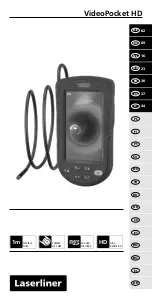
Aquaprobe
®
AP-700, AP-800 & AP-2000 Instruction Manual
10401-00870 Rev R
The Calibration Report on the top line displays the voltage output from the electrode in
millivolts (mV). This value is stored in the Probe's memory and can be recalled at any time.
See section
10.7 Calibration Data Storage and Retrieval
. Press
OK
then
ESC
repeatedly
to return to normal reading mode
.
16.11.6.
Calibrating Point 2
Remove the Probe from the calibration cup, shake off any excess water then dry the outer
sleeve with a soft cloth.
Pour 300mL of fresh CDOM-CAL calibration solution into a clean calibration cup then
gently lower the Probe in all the way.
Follow the procedure detailed above for Zero point calibration as far as step 6, then select
Pt-2. Wait while the Meter stabilises and calibrates.
After successful calibration, the ‘Calibrating 100%’ screen will be displayed along with the
Calibration Report, which will show the voltage output from the electrode in millivolts (mV).
Press the
OK
key to continue.
CDOM calibration is now complete.
16.11.7.
Calculating and Applying a Grab Sample Factor
The Grab Sample Factor (GS Factor) is a value that is used as a multiplier to correct the
readings made by a fluorescent electrode based on known values derived from grab
samples. The default GS factor is 1.00. So when the electrode's output is multiplied by a
GS Factor of 1.00, the value is not affected.
If grab sample data is available for the location in which you plan to take measurements,
you should calculate a GS Factor for the electrode and input it on the bottom line of the
electrode's calibration screen.
To calculate a GS Factor, first take measurements using the fully calibrated electrode.
Next, compare the average of these values with the average values derived by laboratory
analysis of grab samples from the same location. To do this, divide the average grab
sample value by the average electrode value. This will give you a GS Factor.
For example, your calibrated electrode gives an average output of 100 at a given location.
The analysis of grab samples from that location reveal an actual value of 125. So, 125
divided by 100 gives a GS Factor of 1.25.
This value should now be input on the bottom line of the electrode's calibration screen.
Once the GS Factor value has been input, the OK key should be hit to send the Factor to
the Probe.
Now that this GS Factor has been applied to the electrode, all future measurements will be
multiplied by 1.25 prior to being displayed.
In this way, the electrode has been corrected for the local conditions and species of organic
matter.
© 2017 Aquaread
®
Ltd.
www.aquaread.com
Page 90 of 141
















































